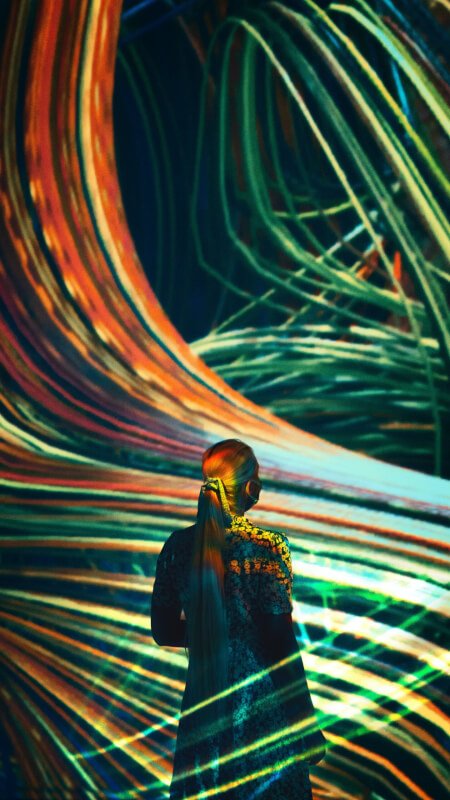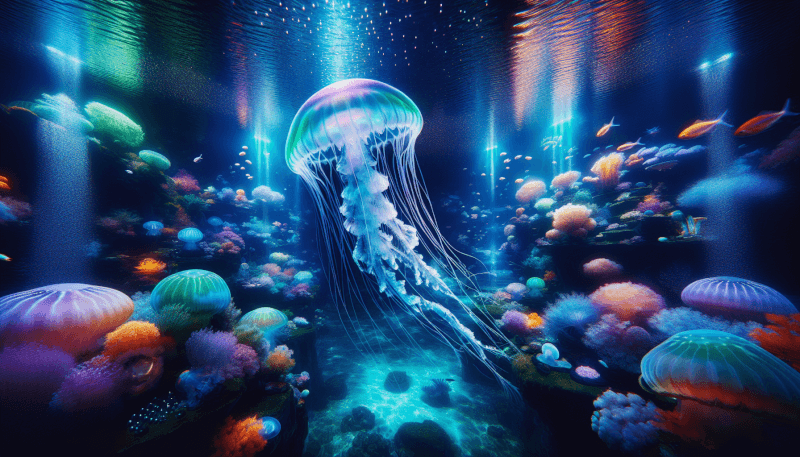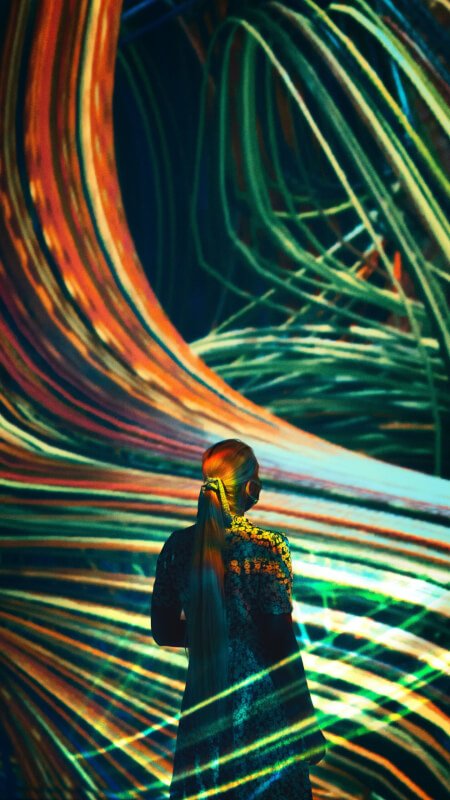Step up your aquarium game with these stunning ways to highlight your underwater oasis using innovative lighting effects. Transform your aquarium into a mesmerizing display with the help of advanced lighting techniques that bring out the natural beauty of your aquatic inhabitants. From subtle color gradients to dynamic light shows, you’ll be amazed how these lighting effects can completely transform the ambiance and make your aquarium the focal point of any room. Say goodbye to dull and ordinary aquariums and say hello to a breathtaking underwater world that is sure to captivate both you and your guests.

Choosing the Right Lighting for Your Aquarium
Aquarium lighting plays a crucial role in not only illuminating your underwater world but also in providing the necessary light for the flora and fauna within your tank. When selecting aquarium lighting, it is important to understand the different types available and consider various factors to ensure you choose the right lighting for your specific needs.
Understanding the Different Types of Aquarium Lighting
There are several types of aquarium lighting available, each with its own advantages and suitability for different aquarium setups. Some common types of aquarium lighting include:
- Incandescent Lighting: This traditional lighting option emits a warm, yellowish light. It is generally considered the least suitable for aquariums due to its low intensity and limited spectrum.
- Fluorescent Lighting: Fluorescent lights are a popular choice for aquariums due to their affordability and availability in a variety of colors. They provide good light output and are suitable for most freshwater aquariums.
- LED Lighting: LED lights have become increasingly popular among aquarium enthusiasts for their energy efficiency, long lifespan, and versatility. They offer a wide range of colors, adjustable intensities, and can be programmed to create various lighting effects.
Factors to Consider When Selecting Aquarium Lighting
When choosing the right lighting for your aquarium, there are several factors you should consider:
- Aquarium Size: The size of your aquarium will determine the number and size of lighting fixtures you need. Larger tanks may require multiple fixtures for adequate coverage.
- Type of Fish and Plants: Different fish species and aquatic plants have varying light requirements. It is important to research the lighting needs of your specific fish and plants to ensure they thrive.
- Desired Lighting Effects: Consider the visual effect you want to achieve in your aquarium. Whether you’re aiming for a natural look or a more vibrant, colorful display, the lighting you choose should align with your aesthetic goals.
- Energy Efficiency: LED lights are known for their energy efficiency, which can help reduce electricity costs and minimize heat output in your tank.
- Budget: Consider your budget when selecting aquarium lighting. While LED lights may have a higher upfront cost, their energy efficiency and long lifespan can make them a cost-effective investment in the long run.
By taking these factors into account, you can make an informed decision when selecting the lighting for your aquarium and ensure the well-being of your aquatic life.
Enhancing the Appearance of Your Aquarium with Lighting Effects
Beyond simply providing illumination, aquarium lighting can be used to enhance the appearance of your underwater oasis. By employing different lighting effects, you can create stunning visual displays that mimic natural environments and showcase the beauty of your fish and plants.
Creating a Natural Sunlight Effect
One of the most popular lighting effects for aquariums is simulating natural sunlight. This effect can be achieved by using lighting fixtures that emit a spectrum of light similar to that of the sun. The lighting should be positioned above the aquarium and angled to create a gentle shimmering effect on the water’s surface. This effect not only creates a visually appealing display but also helps promote the growth of aquatic plants.
Simulating Moonlight Reflections
For a mesmerizing nighttime ambiance, consider simulating moonlight reflections in your aquarium. This effect can be achieved by using dim blue LED lights positioned above the tank. The soft and subtle glow will replicate the ethereal beauty of the moon shining on the water’s surface. It’s important to note that moonlight effects should only be used during nighttime hours to mimic natural lighting cycles for your aquatic life.
Utilizing Color-changing LED Lights
To add a vibrant and dynamic touch to your aquarium, consider utilizing color-changing LED lights. These lights offer a spectrum of colors and can be programmed to transition smoothly between different hues. By creating a colorful light show, you can transform your aquarium into a captivating visual spectacle. Color-changing LED lights are particularly popular for showcasing exotic fish species or creating a futuristic atmosphere.
Adding Depth with Shadow Effects
Shadow effects can be used to create an illusion of depth in your aquarium. By angling the lighting fixtures strategically, you can cast shadows on different parts of the tank, creating a three-dimensional appearance. This effect can make your fish and plants appear more visually striking and add a sense of depth to the overall aquatic landscape. Experiment with different angles and positions to achieve the desired shadow effects in your aquarium.
Creating a Gradient Effect
A gradient effect involves gradually changing the intensity or color of the lighting across the aquarium. This effect can be achieved by using multiple lighting fixtures with different intensities or by adjusting the color settings of LED lights. A gradient effect creates a visually pleasing transition from one side of the tank to the other, mimicking the natural lighting variations found in aquatic environments. It can also help highlight specific areas or create a focal point within your aquarium.
By implementing these lighting effects, you can transform your aquarium into a visually stunning masterpiece that showcases the natural beauty of aquatic life.

Installing Lighting Fixtures in Your Aquarium
Proper installation of lighting fixtures is crucial to ensure optimal performance and safety. Consider the following guidelines when installing lighting fixtures in your aquarium.
Determining the Optimal Placement of Lighting Fixtures
When deciding where to position your lighting fixtures, you need to consider the specific lighting requirements of your fish and plants. Generally, it is recommended to place the lights above the aquarium and position them to provide even coverage across the entire tank.
For larger aquariums, multiple lighting fixtures may be required to ensure adequate lighting in all areas. It is important to position the fixtures in a way that minimizes shadows and provides consistent lighting intensity throughout the tank.
Ensuring Proper Distance and Coverage
The distance between the lighting fixtures and the water’s surface is essential for achieving the desired lighting intensity. Different types of lighting have varying distance guidelines, so it is important to refer to the manufacturer’s recommendations.
A good rule of thumb is to position the lighting fixtures at a distance that allows for proper coverage of the entire tank without causing excessive heat or light intensity. Experiment with different distances to find the optimal balance for your specific aquarium setup.
Avoiding Heat Build-up
Excessive heat can be detrimental to the health and well-being of your aquarium inhabitants. To avoid heat build-up, it is important to choose lighting fixtures that generate minimal heat output.
LED lights are generally preferred for aquariums due to their energy efficiency and low heat emission. If using other types of lighting, such as incandescent or halogen lights, it is important to monitor the temperature and provide adequate cooling mechanisms, such as fans or air circulation, to prevent overheating.
By following these installation guidelines, you can ensure proper lighting in your aquarium while minimizing the risk of heat-related issues.
Using Light Timers and Controllers
Light timers and controllers are invaluable tools for automating and controlling the lighting schedule in your aquarium. They allow you to create natural lighting cycles, simulate sunrise and sunset effects, and adjust the light intensity to meet the specific needs of your aquatic life.
Automating Lighting Schedules
Maintaining a consistent lighting schedule is important for the well-being of your aquarium inhabitants. Light timers allow you to set specific times for the lights to turn on and off automatically, ensuring a consistent lighting cycle.
It is recommended to mimic natural light cycles by simulating a gradual increase in light intensity in the morning, a peak intensity during the day, and a gradual decrease in intensity in the evening. This helps regulate the biological rhythms of your fish and plants, promoting overall health and well-being.
Simulating Sunrise and Sunset Effects
Create a more natural and soothing environment in your aquarium by simulating sunrise and sunset effects. Light controllers with gradual dimming and brightening capabilities allow you to mimic the gradual transition from darkness to daylight and vice versa.
By gradually increasing or decreasing the light intensity over a specified period, you can replicate the natural lighting changes experienced in the wild. This not only enhances the visual appeal but also helps maintain a more natural environment for your aquatic life.
Controlling Light Intensity
Light controllers also provide the ability to adjust the light intensity according to the specific needs of your fish and plants. Some species may require lower light intensity, while others may thrive in brighter conditions.
By having control over the light intensity, you can easily adapt to the changing requirements of your aquarium. It also allows you to create visual effects by adjusting the brightness of specific areas or highlighting certain features within your tank.
Light timers and controllers provide convenience, flexibility, and the ability to create a more natural lighting environment for your aquarium. By utilizing these tools, you can ensure optimal lighting conditions for the well-being and aesthetics of your underwater world.

Exploring Advanced Lighting Techniques
For the aquarium enthusiast looking to take their lighting game to the next level, there are several advanced lighting techniques that can be implemented to create truly extraordinary displays.
Implementing Dynamic Lighting Scenes
Dynamic lighting scenes involve programming your lighting fixtures to cycle through different lighting effects or colors at predetermined intervals. This creates an ever-changing visual display in your aquarium, capturing the attention of anyone who gazes upon it.
From capturing the vibrant colors of a coral reef to simulating the sunrise and twilight in a tropical paradise, dynamic lighting scenes provide a captivating experience that brings your underwater world to life.
Creating a Biotope Effect
The biotope effect focuses on emulating specific natural habitats found in the wild. By researching the lighting conditions of a particular region or ecosystem, you can recreate the lighting effects that are unique to that environment.
For example, if you have a tank with Amazonian fish species, you can replicate the dappled sunlight effect found in the Amazon rainforest by strategically positioning the lighting fixtures and utilizing shade-providing structures.
Creating a biotope effect not only enhances the realism of your aquarium but also supports the natural behaviors and preferences of your aquatic life.
Integrating Lighting with Water Flow
Integrating lighting with water flow can create mesmerizing displays that mimic the movement of light underwater. By positioning lighting fixtures near water jets, filters, or other sources of water movement, you can enhance the visual appeal and depth in your tank.
As the water flows and ripples, the light will dance and create shimmering effects, adding a dynamic element to your aquarium. This technique works particularly well when combined with different lighting colors and intensities to create a captivating underwater spectacle.
By exploring these advanced lighting techniques, you can push the boundaries of creativity and elevate the visual impact of your aquarium to new heights.
Maintaining and Cleaning Aquarium Lighting
Proper maintenance and cleaning of your aquarium lighting are essential for ensuring optimal performance and longevity. Regular inspection, cleaning, and timely replacement of bulbs and components are key to maintaining a healthy and vibrant underwater environment.
Regular Inspection and Cleaning
Periodically inspect your lighting fixtures for any signs of damage, corrosion, or malfunction. Check the wiring, connectors, and switches to ensure they are secure and functioning properly.
Dust and debris can accumulate on the surfaces of the lighting fixtures over time, reducing their effectiveness and potentially causing overheating. Gently clean the fixtures using a soft, lint-free cloth to remove any dirt or grime. Avoid using harsh chemicals or abrasive materials that could scratch or damage the surfaces.
Replacing Bulbs and Components
Over time, the bulbs in your lighting fixtures may lose their intensity or burn out completely. It is important to replace them promptly to maintain the desired lighting conditions in your aquarium.
Refer to the manufacturer’s guidelines for the recommended lifespan of the bulbs and the process for replacing them. Some fixtures may require specific types of bulbs or components, so it is important to choose replacements that are compatible.
Preventing Water Damage
Water is a potential hazard for electrical components, so it is important to take precautions to prevent water damage. Ensure that all electrical connections are properly sealed and protected from moisture. Use waterproof covers or housings for lighting fixtures that are in close proximity to water.
In the event of a water leak or spill, immediately disconnect the lighting fixtures from the power source and thoroughly dry them before reconnecting.
By following these maintenance practices, you can prolong the lifespan of your aquarium lighting and ensure that it continues to provide the necessary illumination for a healthy and visually appealing underwater world.

Avoiding Common Mistakes with Aquarium Lighting
To maximize the benefits of aquarium lighting, it is important to avoid common mistakes that can compromise the health and well-being of your aquatic life.
Using Incompatible Lighting Systems
Different types of lighting systems have specific requirements and may not be compatible with each other. Mixing incompatible lighting systems can lead to imbalances in light intensity or spectrum, which can negatively affect the growth and overall health of your fish and plants.
Ensure that all your lighting fixtures are from the same system or are specifically designed to work together harmoniously. Consult with experts or refer to the manufacturer’s guidelines to determine the compatibility of different lighting systems.
Overexposing or Underexposing the Aquarium
Providing the right amount of light for your aquarium is crucial for the well-being of your fish and plants. Overexposure or underexposure to light can lead to various issues, including algae overgrowth, stunted plant growth, and stress in fish.
Research the specific light requirements of your aquarium inhabitants and adjust the light intensity accordingly. It is recommended to provide a balance between light and darkness by following a consistent lighting schedule and avoiding prolonged exposure to excessive light.
Neglecting Light Temperature and Spectrum
Different fish species and aquatic plants have specific light temperature and spectrum requirements. Neglecting to consider these factors can result in poor growth, color fading, or even death of your aquarium inhabitants.
Research the ideal light temperature and spectrum for your specific fish and plants. This information can usually be found in aquatic plant or fish care guides. Choose lighting fixtures that offer the appropriate color temperature and spectrum to meet the specific needs of your underwater ecosystem.
By avoiding these common mistakes, you can ensure that your aquarium lighting provides the ideal conditions for the health, growth, and visual appeal of your underwater world.
DIY Lighting Projects for Aquarium Enthusiasts
For the creative and hands-on aquarium enthusiasts, there are several do-it-yourself (DIY) lighting projects that can add a personal touch to your aquarium setup and provide unique lighting effects.
Constructing a DIY LED Lighting System
Building a DIY LED lighting system gives you the flexibility to customize the color, intensity, and effects of your aquarium lighting. By purchasing individual LED components and following online guides or tutorials, you can create a lighting system tailored to your specific needs.
This DIY project requires some basic knowledge of electrical wiring and soldering. It is important to research the specific LED components and their compatibility with your aquarium setup. Ensure that you follow safety precautions and adhere to electrical codes while working on this project.
Creating a DIY Fiber Optic Starry Night Effect
For a stunning and ethereal lighting effect, consider creating a DIY fiber optic starry night effect in your aquarium. This project involves using fiber optic strands connected to a light source outside the tank to create a twinkling starry sky effect.
Position the fiber optic strands strategically within your aquarium to achieve the desired effect. The light source can be placed above the tank or hidden in a separate enclosure. This project requires careful planning and installation to ensure the fiber optic strands are securely placed and properly illuminated.
Designing a DIY Reflective Light Canopy
A DIY reflective light canopy can significantly enhance the lighting in your aquarium by maximizing light reflection and minimizing light loss. This project involves constructing a canopy using reflective materials, such as mirrors or Mylar film, to redirect and amplify the light emitted by the lighting fixtures.
Research different canopy designs and materials to identify the most suitable option for your aquarium setup. Carefully measure and cut the reflective materials to fit the dimensions of your tank. Ensure that the materials are properly secured and positioned to maximize light reflection.
These DIY projects provide a rewarding opportunity to personalize your aquarium lighting and create unique effects that can’t be found in off-the-shelf options. Remember to exercise caution and work within your skill level when undertaking any DIY projects.

Inspiring Ideas for Creative Lighting Displays
Incorporating lighting with aquascaping, the art of designing and arranging aquatic plants, rocks, and other decorative elements, can elevate the visual impact of your aquarium. Here are some inspiring ideas for creative lighting displays:
Mixing Lighting with Aquascaping
Highlight the natural beauty of your aquascape by strategically positioning lighting fixtures to illuminate specific features or focal points. By using different intensities and angles, you can create dramatic shadows and enhance the texture and depth of your aquascape.
For example, positioning lighting fixtures behind tall plants or rock formations can create stunning silhouettes and add depth to your aquarium. Experiment with different lighting placements to achieve the desired effect and showcase the intricacies of your aquascape.
Using Lighting to Highlight Specific Fish or Plants
Draw attention to specific fish species or vibrant aquatic plants by using lighting techniques that highlight their colors and unique features. By positioning lighting fixtures directly above or behind these focal points, you can create a spotlight effect that accentuates their beauty.
For brightly colored fish, using lighting fixtures with a higher color temperature can make their colors appear more vibrant and intense. Similarly, positioning lighting fixtures to create backlighting for translucent or ethereal plants can enhance their delicate appearance.
Creating a Unique Themed Lighting Display
Take your aquarium to the next level by creating a unique themed lighting display. Whether you want to recreate the ethereal beauty of a coral reef, the mystique of a deep-sea dive, or the enchantment of an enchanted forest, the possibilities are endless.
Research the specific lighting conditions and effects found in the environment you want to recreate. Experiment with different lighting colors, intensities, and effects to capture the essence of the theme you desire. By creating a themed lighting display, you can transport yourself and your viewers into a world of wonder and imagination.
Be creative and have fun with your lighting displays, as they offer a wonderful opportunity to express your personal style and showcase the beauty of your aquarium.
Taking Safety Precautions with Aquarium Lighting
Safety should always be a top priority when working with electrical components and water. Follow these safety precautions to ensure a safe environment for you and your aquarium inhabitants.
Using Certified Lighting Products
When selecting lighting fixtures for your aquarium, it is important to choose products that have been certified and tested for safety. Look for certifications such as UL, CE, or ETL, which indicate that the product has met the required safety standards.
Certified lighting products are designed to withstand the rigors of aquarium use and minimize the risk of electrical malfunctions or hazards. They are also more likely to be constructed using non-toxic materials that are safe for aquatic life.
Properly Sealing Electrical Connections
Properly sealing electrical connections is crucial to prevent water damage and reduce the risk of electrical shock. Use waterproof connectors, gaskets, or sealants to seal any electrical connections, especially those in close proximity to water.
Ensure that all connections are secure and insulated to prevent water from seeping into the wiring or connectors. Regularly inspect the seals and connections for signs of wear or damage, and replace any damaged components immediately.
Avoiding Water and Electricity Contact
Water and electricity should never come into direct contact with each other in an aquarium. To minimize the risk of electrical shock or short circuits, follow these guidelines:
- Keep all electrical components and wiring elevated above the waterline.
- Use drip loops in the wiring to prevent water from running along the cable and reaching electrical connections.
- Position lighting fixtures, power cords, and timers in a way that minimizes the risk of accidental water splashes or spills.
- Be cautious when performing maintenance or cleaning near electrical components and always unplug or disconnect them.
By observing these safety precautions, you can enjoy the beauty and benefits of aquarium lighting while ensuring the well-being and safety of yourself and your aquatic life.
In conclusion, choosing the right lighting for your aquarium involves understanding the different types available, considering various factors, and implementing lighting effects to enhance the appearance of your underwater world. Proper installation, use of light timers and controllers, exploration of advanced lighting techniques, and regular maintenance are essential for optimal lighting performance. By avoiding common mistakes, undertaking DIY lighting projects, and incorporating creative lighting displays, you can create a visually stunning and safe aquatic environment. Whether your goal is to replicate natural environments, highlight specific fish and plants, or create a unique lighting theme, the possibilities are endless. With proper planning and attention to safety, your aquarium lighting can truly transform your underwater oasis into a breathtaking masterpiece.


